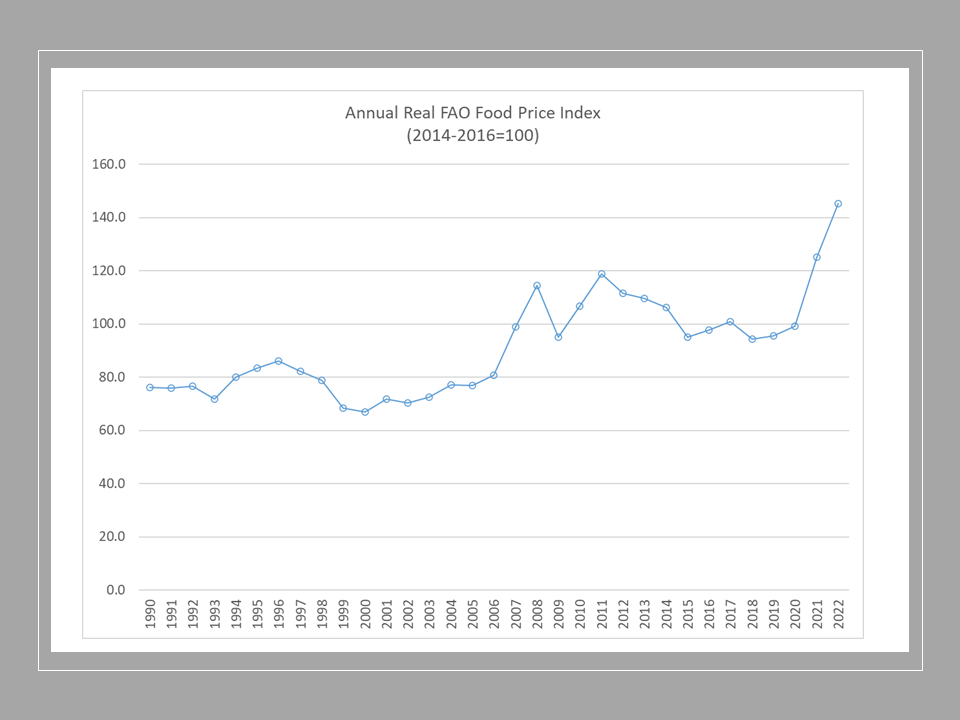Pick Up
631. Responding to the Global Food Price Crisis

In Japan, many food price increases have been reported this October. Looking around the world, even before Russia's invasion of Ukraine, a combination of climate shocks, regional armed conflicts, and pandemics had impacted production and distribution, causing the cost of living to rise through higher food prices. The war in Ukraine has exacerbated the situation, with food and fertilizer prices still at historically high levels. Rising food prices have a particularly large impact on vulnerable countries and social groups.
According to IMF Notes published at the end of September, food and fertilizer price shocks will have the greatest impact on 48 countries, mainly in sub-Saharan Africa and West Asia, where imports in 2022-2023 are expected to cost an additional $9 billion. The budget for assistance to the most vulnerable households in these countries is estimated at $5-7 billion. In response to the crisis, the IMF is calling for timely action on a global scale in the areas of maintaining open trade, strengthening food production and distribution networks, and investing in climate-resilient agriculture, through international humanitarian assistance and domestic fiscal measures.
Reference
Björn Rother, Sebastian Sosa, Lukas Kohler, Gaelle Pierre, and others. 2022.“Tackling the Global Food Crisis: Impact, Policy Response, and the Role of the IMF?” IMF Note 2022/004,
International Monetary Fund, Washington, DC.https://www.imf.org/en/Publications/IMF-Notes/Issues/2022/09/27/Tacklin…;
Contributor: IIYAMA Miyuki (Information Program)
